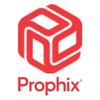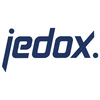Enterprise Performance Management Software
EPM systems enable organizations to execute their business strategies with accurate financial and operational management. +Show More
| Products | Position | Customer satisfaction | |||
|---|---|---|---|---|---|
|
|
Leader
|
Satisfactory
|
|
||
|
Vena is the only Complete Planning platform that empowers and inspires business leaders and finance and operations professionals to Plan To Grow™. Vena leverages the familiarity and flexibility of an Excel interface within the Vena Growth Engine, the SaaS platform and methodology that powers your plans and guides your journey to growth. Over 1,500 of the world's leading companies grow with Vena, including Nike, Coca-Cola Consolidated and the Kansas City Chiefs. In addition, Vena works with over 100 world-class Partners. G2 categories include: Corporate Performance Management (CPM) Software, Budgeting and Forecasting Software, Financial Close Software, Sales Performance Management Software and more.
Basis for EvaluationWe made these evaluations based on the following parameters; Customer satisfaction
Average rating
Market presence
Company's number of employees
400-1k employees
Company's social media followers
20k-30k followers
Total funding
$250-500m
# of funding rounds
4
Latest funding date
April 27, 2021
Last funding amount
$100-250m
Company
Type of company
private
Founding year
2011
|
|||||
|
|
Leader
|
Satisfactory
|
|
||
|
Anaplan's connected planning platform enables organizations to accelerate decision making by connecting data, people, and plans across the business.
Basis for EvaluationWe made these evaluations based on the following parameters; Customer satisfaction
Average rating
Market presence
Number of case studies
100-200 case studies
Company's number of employees
2k-3k employees
Company's social media followers
100k-1m followers
Total funding
$250-500m
# of funding rounds
9
Latest funding date
January 1, 2018
Company
Type of company
public
Founding year
2006
|
|||||
|
|
Leader
|
Satisfactory
|
|
||
|
BOARD helps organizations reach a single vision of their performance in a simple and extremely effective manner.
Basis for EvaluationWe made these evaluations based on the following parameters; Customer satisfaction
Average rating
Market presence
Number of case studies
100-200 case studies
Company's number of employees
400-1k employees
Company's social media followers
100k-1m followers
# of funding rounds
1
Latest funding date
January 1, 2019
Company
Type of company
private
Founding year
1994
|
|||||
|
|
Leader
|
Satisfactory
|
|
||
|
Learn how cloud analytics technology enables data visualization and improved business intelligence with SAP Analytics Cloud.
Basis for EvaluationWe made these evaluations based on the following parameters; Customer satisfaction
Average rating
Market presence
Company's number of employees
100k-1m employees
Company's social media followers
4m-5m followers
Total funding
$1-5bn
# of funding rounds
2
Latest funding date
April 24, 2019
Last funding amount
$1-5bn
Company
Type of company
public
Founding year
1972
|
|||||
|
|
Leader
|
Satisfactory
|
|
||
|
Ambitious finance leaders use Prophix to drive progress. By improving the speed and accuracy of decision making, Prophix’s Financial Performance Platform elevates the talents of finance teams to do their best work. Crush complexity, reduce uncertainty, and illuminate insights with access to best-in-class AI insights and planning, budgeting, forecasting, reporting, and consolidation functionalities. More than 2,500 active customers across the globe rely on Prophix to achieve organizational success. Prophix is a private company, backed by Hg Capital, a leading investor in software and services businesses.
Basis for EvaluationWe made these evaluations based on the following parameters; Customer satisfaction
Average rating
Market presence
Number of case studies
100-200 case studies
Company's number of employees
400-1k employees
Company's social media followers
20k-30k followers
Total funding
$5-10m
# of funding rounds
2
Latest funding date
February 4, 2021
Company
Type of company
private
Founding year
1987
|
|||||
|
|
Challenger
|
Satisfactory
|
|
||
|
Planful is the pioneer of financial performance management cloud software. The Planful platform is used by the Office of the CFO around the globe to streamline business-wide planning, budgeting, consolidations, reporting, and visual analytics. Planful empowers users to plan confidently, close faster, and report accurately. More than 1,000 customers, including Boston Red Sox, Del Monte, TGI Friday’s, and 23andMe, rely on Planful to accelerate cycle times, increase productivity, and improve accuracy across the end-to-end FP&A process. Planful is a private company backed by Vector Capital, a leading global private equity firm.
Basis for EvaluationWe made these evaluations based on the following parameters; Customer satisfaction
Average rating
Market presence
Number of case studies
30-40 case studies
Company's number of employees
400-1k employees
Company's social media followers
50k-100k followers
Total funding
$50-100m
# of funding rounds
11
Latest funding date
January 1, 2022
Company
Type of company
private
Founding year
2001
|
|||||
|
|
Challenger
|
Satisfactory
|
|
||
|
Datarails is a financial planning and analysis platform that automates financial reporting and planning, while enabling finance teams to continue benefiting from the familiar spreadsheets and financial models of Excel. Automating these time-consuming manual processes paves the way for finance teams to spend more time analyzing data and less time gathering it. And it empowers them to answer essential strategic questions like what their organization can do to increase revenue and reduce expenses.
Basis for EvaluationWe made these evaluations based on the following parameters; Customer satisfaction
Average rating
Market presence
Number of case studies
20-30 case studies
Company's number of employees
200-300 employees
Company's social media followers
40k-50k followers
Total funding
$100-250m
# of funding rounds
8
Latest funding date
March 10, 2022
Last funding amount
$50-100m
Company
Type of company
private
Founding year
2015
|
|||||
|
|
Challenger
|
Satisfactory
|
|
||
|
OneStream Software provides a market-leading intelligent finance platform that reduces the complexity of financial operations. OneStream unleashes the power of finance by unifying corporate performance management (CPM) processes such as planning, financial close & consolidation, reporting and analytics through a single, extensible solution. We empower the enterprise with financial and operational insights to support faster and more informed decision-making. All in a cloud platform designed to continually evolve and scale with your organization. To learn more visit www.onestream.com.
Basis for EvaluationWe made these evaluations based on the following parameters; Customer satisfaction
Average rating
Market presence
Company's number of employees
1k-2k employees
Company's social media followers
40k-50k followers
Total funding
$100-250m
# of funding rounds
1
Latest funding date
April 6, 2021
Last funding amount
$100-250m
Company
Type of company
private
Founding year
2010
|
|||||
|
|
Challenger
|
Satisfactory
|
|
||
|
Jedox is the world’s most adaptable planning and performance management platform that empowers organizations to deliver plans that outperform expectations. Over 2,500 organizations in 140 countries trust Jedox to model any scenario, integrate data from any source and simplify cross-organizational plans across all business systems. Jedox enables a culture of decisiveness and confidence so teams can plan for opportunities, react quickly to changes, and uncover what they didn’t know was possible.
Basis for EvaluationWe made these evaluations based on the following parameters; Customer satisfaction
Average rating
Market presence
Number of case studies
100-200 case studies
Company's number of employees
300-400 employees
Company's social media followers
30k-40k followers
Total funding
$100-250m
# of funding rounds
6
Latest funding date
January 12, 2021
Last funding amount
$100-250m
Company
Type of company
private
Founding year
2002
|
|||||
|
|
Challenger
|
Satisfactory
|
|
||
|
LucaNet is a global software provider for financial consolidation, planning, and reporting. Our mission is to provide financial professionals with ease of mind by making their everyday lives easier. This way, they can fully focus on what matters most: minimizing risks, driving sustainable growth, and confidently making effective business decisions. Our reliable Corporate Performance Management platform for Finance is designed to match the exact requirements of finance teams, providing accurate and consistent information effectively with its user-friendly interfaces and fast implementation approach. For more than 20 years, 3,900 customers in 50 countries have already trusted LucaNet. Wherever reliable financial data is needed, we are there. Working with a worldwide partner network we provide state-of-the-art technologies and one-of-a-kind support. At the top of our agenda: a product that makes a real impact every day.
Basis for EvaluationWe made these evaluations based on the following parameters; Customer satisfaction
Average rating
Market presence
Number of case studies
10-20 case studies
Company's number of employees
400-1k employees
Company's social media followers
30k-40k followers
|
|||||
“-”: AIMultiple team has not yet verified that vendor provides the specified feature. AIMultiple team focuses on feature verification for top 10 vendors.
Sources
AIMultiple uses these data sources for ranking solutions and awarding badges in enterprise performance management software:
Enterprise Performance Management Leaders
According to the weighted combination of 4 metrics



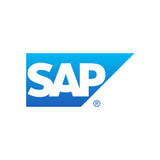

What are enterprise performance management
customer satisfaction leaders?
Taking into account the latest metrics outlined below, these are the current enterprise performance management customer satisfaction leaders:





Which enterprise performance management solution provides the most customer satisfaction?
AIMultiple uses product and service reviews from multiple review platforms in determining customer satisfaction.
While deciding a product's level of customer satisfaction, AIMultiple takes into account its number of reviews, how reviewers rate it and the recency of reviews.
- Number of reviews is important because it is easier to get a small number of high ratings than a high number of them.
- Recency is important as products are always evolving.
- Reviews older than 5 years are not taken into consideration
- older than 12 months have reduced impact in average ratings in line with their date of publishing.
What are enterprise performance management
market leaders?
Taking into account the latest metrics outlined below, these are the current enterprise performance management market leaders:





Which one has collected the most reviews?
AIMultiple uses multiple datapoints in identifying market leaders:
- Product line revenue (when available)
- Number of reviews
- Number of case studies
- Number and experience of employees
- Social media presence and engagement
What are the most mature enterprise performance management software?
Which one has the most employees?

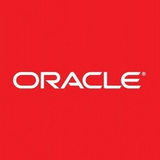
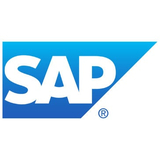


Which enterprise performance management companies have the most employees?
206 employees work for a typical company in this solution category which is 183 more than the number of employees for a typical company in the average solution category.
In most cases, companies need at least 10 employees to serve other businesses with a proven tech product or service. 47 companies with >10 employees are offering enterprise performance management software. Top 3 products are developed by companies with a total of 600k employees. The largest company in this domain is IBM with more than 300,000 employees. IBM provides the enterprise performance management solution: IBM Planning Analytics (PA)
Insights
What are the most common words describing enterprise performance management software?
This data is collected from customer reviews for all enterprise performance management companies. The most positive word describing enterprise performance management software is “Easy to use” that is used in 10% of the reviews. The most negative one is “Difficult” with which is used in 5% of all the enterprise performance management reviews.
What is the average customer size?
According to customer reviews, most common company size for enterprise performance management customers is 51-1,000 employees. Customers with 51-1,000 employees make up 37% of enterprise performance management customers. For an average Finance solution, customers with 51-1,000 employees make up 22% of total customers.
Customer Evaluation
These scores are the average scores collected from customer reviews for all enterprise performance management software. Enterprise Performance Management Software are most positively evaluated in terms of "Customer Service" but falls behind in "Ease of Use".
Where are enterprise performance management vendors' HQs located?
Trends
What is the level of interest in enterprise performance management software?
This category was searched on average for 1k times per month on search engines in 2024. This number has decreased to 0 in 2025. If we compare with other finance solutions, a typical solution was searched 886 times in 2024 and this decreased to 0 in 2025.
Learn more about Enterprise Performance Management Software
The advantages of EPM systems are generally related to financial planning and the effectiveness of business strategies. EPM software also enables companies to analyze different costs on a single platform to improve cost management.
Fast budgeting and forecasting: As the EPM software provides an overview of the factors affecting budget planning, the budget planning process is accelerated. Thanks to EPM systems, historical outcomes can be easily used in budget forecasting.
Reducing effort necessary for financial close: EPM systems enable enterprises to quickly adap their financial planning to changes in the market which makes it easy to complete the financial close.
Key enterprise data consolidated in one source: EPM systems allow the data accumulated in different sources to be analyzed in a single environment. In this way, different department data can be monitored in a single management platform.
Improved financial performance management: EPM systems enable companies to continuously monitor the impact of current business strategies, enabling them to continuously improve these strategies.
The main points to be considered before purchasing an EPM system are system integration with other systems, implementation method, ease of use and system security.
Integration and Customization: An EPM system should be integrated with important systems of record. Different platforms should be able to share data and workflows in real-time with EPM software. Therefore, the integration and customization features of the EPM systems should meet the requirements of the enterprise.
Implementation: There can be two options for an EPM system: cloud-Based or on-premise. Many EPM systems are available as both cloud and on-premise. A cloud-based EPM can provide a faster implementation, real-time access to data, and reports without t further capital investment. On the other hand, on-premise implementations can provide a potentially more secure solution and full control over the system. Also, depdnding on the license agreement, on-premise solutions may need further investment in constant upgrades for new functionalities.
User Interface: Several interfaces can be needed for different users in the same EPM system. EPM software should be adaptive for use on different types of devices as well. Moreover, an EPM system should provide effective data visualization and interactive dashboards in order to be a user-friendly platform.
Functionalities: An EPM system should cover the critical capabilities as described in the previous section. A product may have more advanced reporting or data analytics features. Depending on the enterprise requirements, companies should trade off costs against advanced functionalities.
Security: Financial planning procedures can have a vital role and the security of the data must be maintained. On-premise implementations can provide a more secure but costly solution. However, an on-premise solution that is not up to date can be less secure than a cloud solution.
An EPM system typically has the following capabilities:
- Financial management:
- Planning and forecasting
- Performance analysis and management: Cloud-based EPM systems provide a collaborative and sharing platform for employees to help improve performance management.
- Workflow and process management
- Reporting
EPM systems achieve these capabilities by providing interactive dashboards and data visualizations, aggregating data from various data sources.
Allied Market Research projected the EPM market to reach $13 billion by 2025, growing at a CAGR of 12% from 2018 to 2025. The major factors that drive EPM adoption are: the need for sharing and executing business strategies transparently, the need for improved scalability and the increase in complexity of business systems and their integration.
The need for sharing business strategies transparently: Large companies are notoriously slow in changing their strategies. To ensure that the whole organization is aligned on the strategy, strategies need to be transparent and constantly monitored. With EPM software scorecards and dashboards, business strategies are shared transparently and relevant outcomes are easily monitored. Thus, it is easier to rapidly change a company's strategy in light of market changes and take action rapidly to achieve the desired performance.
The need for improved scalability: In expanding and growing businesses, scaling is required to manage the increasing demand for raw materials, technology and human resources. EPM systems can help organizations understand and forecast their requirements for growth.
Increase in complexity of used systems: Enterprises have to manage many complex software and hardware systems and run complex processes. This complexity gradually increases over time as companies serve a larger number of customers and customers demand more customized service. As complexity increases, financial planning becomes difficult. EPM tools facilitate financial planning and increase the level of automation in performance management tasks.





